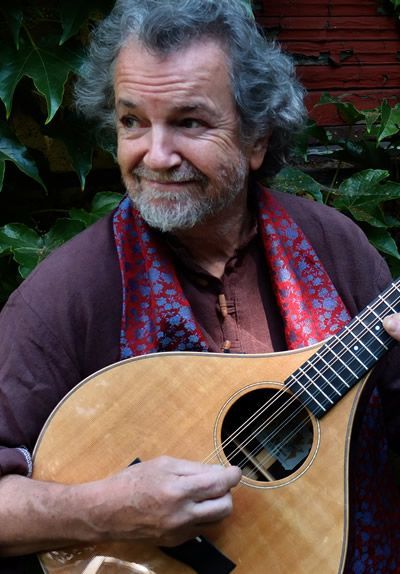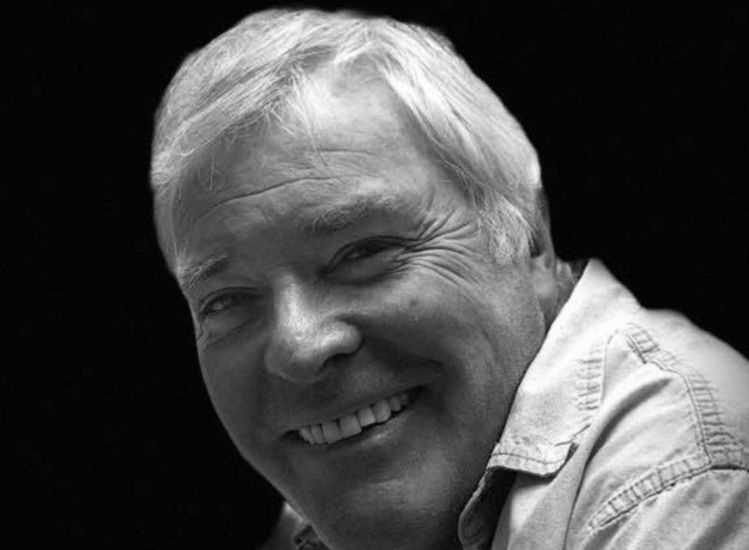Last week I received an email from Don Meade, a multi-instrumentalist who has been one of traditional music’s fiercest supporters for decades, that contained some most unfortunate news: New York University’s Glucksman Ireland House would no longer host his “Blarney Star” concert series. It had been among Ireland House’s most popular public programming for 15 years, but university-wide budgetary changes seem to have led to its demise. It’s a big loss.
The “Blarney Star” series started at – and was named for – Tony Brady’s lower Manhattan Blarney Star bar, which hosted Meade’s concerts 1994-2003. It was an important, welcoming spot in which Meade had a free hand to present the finest in traditional music, which he did in spades. He not only hosted innumerable legendary artists there, but he gave many, many younger musicians their first chance to be in the spotlight.
The Blarney Star’s termination at NYU isn’t just the conclusion of Meade’s efforts, rather it seems to be the end of an era in traditional music in the City. The Blarney Star concerts were part of a lineage that began in the 1970s at a bar owned by Jimmy Noone on West 14th St. called the Eagle Tavern. Concerts at the Eagle are rightly famous. Anyone who was anyone at the time performed there, and people who were around can easily recall several nights that are now considered “historic.”
In those first few years, Bill Black and guitarist John Dillon were responsible for the music. In the early 1980s, they passed the baton to singer Dan Milner and piper Mike McQuaid who built on their work. When McQuaid left New York in 1985, Meade and Trudy Callaghan inherited the gig and worked together until she left the City the late 1980s, at which time Meade took over and ran the concerts on his own until the Eagle’s closing in 1993. He’s maintained the series ever since under the “Blarney Star” banner and had weathered numerous changes over the decades.
NYU’s decision is very much indicative of how much Manhattan has changed in recent years. “Unfortunately, there are no such places as the Eagle Tavern or Blarney Star in Manhattan anymore,” Meade wrote in his email. “[There are no more] vacant rooms attached to bars available without rent for concert production.” High rents mean bars no longer have “nooks and crannies” to offer young musicians and high overheads means universities and presenting organizations have to take an increasingly mainstream approach to programming, which seems to leave traditional music out in the cold.
The Blarney Star’s end comes at a time where the landscape for traditional music’s future in Manhattan is uncertain. The fortunes for established artists run hot and cold. So while Mick Moloney put on a brilliant and incredibly well-attended St. Patrick’s show with the Green Fields in the Players theater last month, other established acts have struggled to attract audiences in larger venues like Symphony Space. Even the Irish Arts Center, which opened its magnificent new location last year, has scaled down its traditional programming for the 2022 season. This year, it presented “The Bluegrass Situation Presents: A St. Patrick's Festival,” over the holiday weekend. The show featured Jake Blount, Nic Gareiss, Allison de Groot, Tatiana Hargreaves, and Tim Erikson, a fabulous lineup of top-shelf artists well known to the bluegrass community. However, the lack of artists grounded primarily in Irish music at what is the most important time of the year for traditional musicians was noted by many and brought to my attention several times.
But the Irish Arts Center is subject to even larger forces outside of its control. For example, it recently received a major setback to their limited traditional scheduling when concerts by the ballad group Ye Vagabonds, who had been scheduled to perform April 7-10, had to be cancelled because of a delay in obtaining the visa required for their entry. (This, despite already having U.S. Citizenship and Immigration Services/USCIS approval for the group’s work permit.) Ye Vagabonds was a brilliant programming idea but a problematic immigration policy that doesn’t seem to be going away spoiled the day.
This particular circumstance ties into a much larger and more concerning issue facing traditional music: the difficulties artists have with getting work and entry visas. I wrote about this subject in the Echo in September 2016 (Andy Irvine had announced: “It's my last tour because the U.S. powers that be just make it too difficult" -- read it here), while the Milwaukee Irish Music Fest followed up with a more nuanced and detailed piece a few months later (“Disincentives for Foreign Artists Performing in the United States" -- read that here).
Because of the cost and hassle associated with obtaining visas and permits – a situation compounded further by the USCIS’s September 2020 announcement of a fees increase – fewer artists are electing to perform in the United States. Some can’t afford it without sponsorship, others simply won’t on principle. But even if they could and were interested in coming to New York City, where would they play these days?
It’s a troublesome situation, and one that will hopefully change in the future. In the meantime, we can lament the loss of the Blarney Star and hope that something will come along to pick up where Meade left off. New York needs it, maybe now more than ever.









